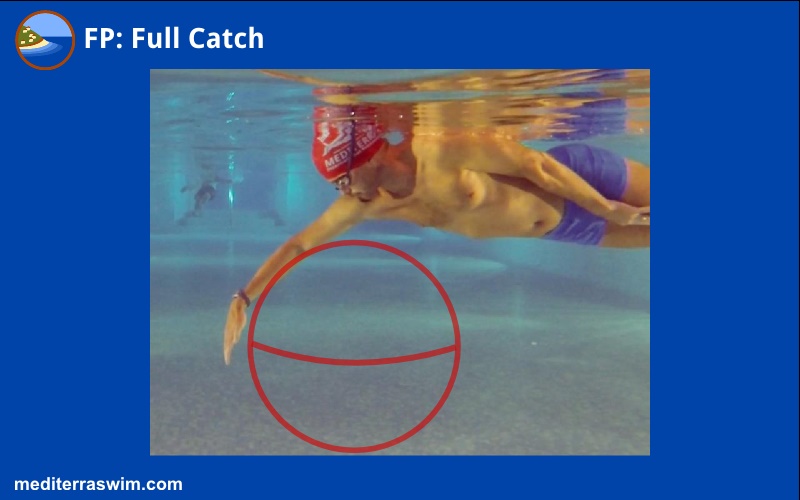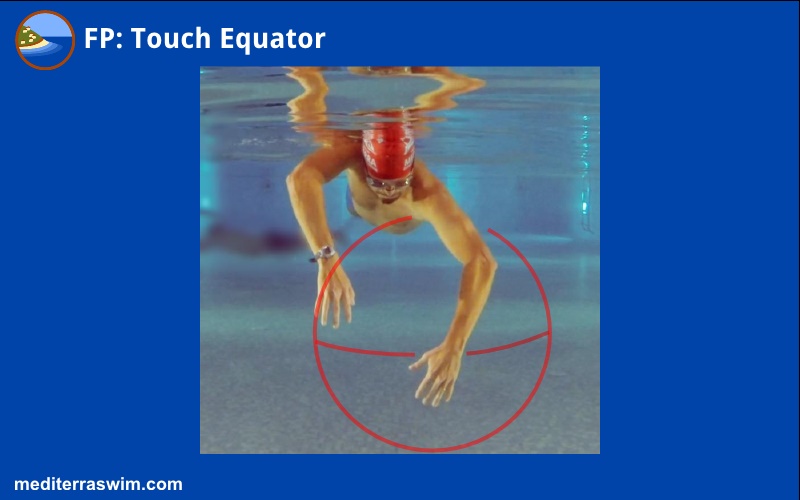Here is a text description of forming the catch…
The spearing arm is extending forward. Done correctly the elbow has remained pointing out, directly to the side.
If this is the case, at full extension of the arm, let the pressure of water in front simply press the relaxed hand and forearm down to catch position, pivoting at the elbow. The elbow does not drop at this moment, instead it stays at the same depth and slides outward so that the hand can stay on the track in line with the shoulder. Or, in other words, the upper arm stays nearly horizontal while the forearm drops into a steep angle, creating a ‘paddle’ surface with the hand and forearms as one straight firm unit.

If you did this with both arms at the same time you might look like you were hugging a large pilates ball, with arms draped over the upper half, curving down.

The goal is to begin to catch the water as far in front of the body as comfortably possible.
EVF is Early Vertical Forearm. It is a catch style easily recognized in elites where it appears as if the forearm is truly pointing straight down at the beginning of the catch (from certain angles). I would not recommend going to this extreme for common swimmers because of the risk to the shoulder and the extreme professional care that should guide the formation of this advanced technique. It gets more grab but it is an example of pursuing ultimate speed via a technique that presents much greater risk to the joint – for all those that we admire on the championship video clips I really wonder how many swimmers were torn up trying to practice this way. Unless we see some compelling evidence otherwise I won’t be quick to support EVF for long distance or for a lifelong practice of swimming. Instead we may more safely aim for a catch that keeps the elbow pointed out as the catch is set, with a more modest but ‘catching’ angle at the beginning of the catch. The point is, we want a forearm that holds water pressing directly to the rear, not downward at all – force vectors aligned with the direction we’re intending to travel.
Some focus points in the formation:
- elbow pointing out
- forearm and hand form a firm flat paddle
- fingers have slight spread to them as if lifting a handful of sand (not too tense)
- elbow begins to bend, moving to the side to accommodate the dropping forearm
- forearm/hand ‘paddle’ is angled down and inward
- set that ‘paddle’ as far in front of you as comfortable
- upper arm feels nearly horizontal at the beginning of the catch
- hand is on track in line with shoulder, and generally stays on this track through the catch phase (there is some ‘sculling’ to accomodate biomechanics)
- the moment you apply pressure with the paddle is the moment you begin core rotation. Use the core to power it, use the shoulder muscles to stabilize it.


